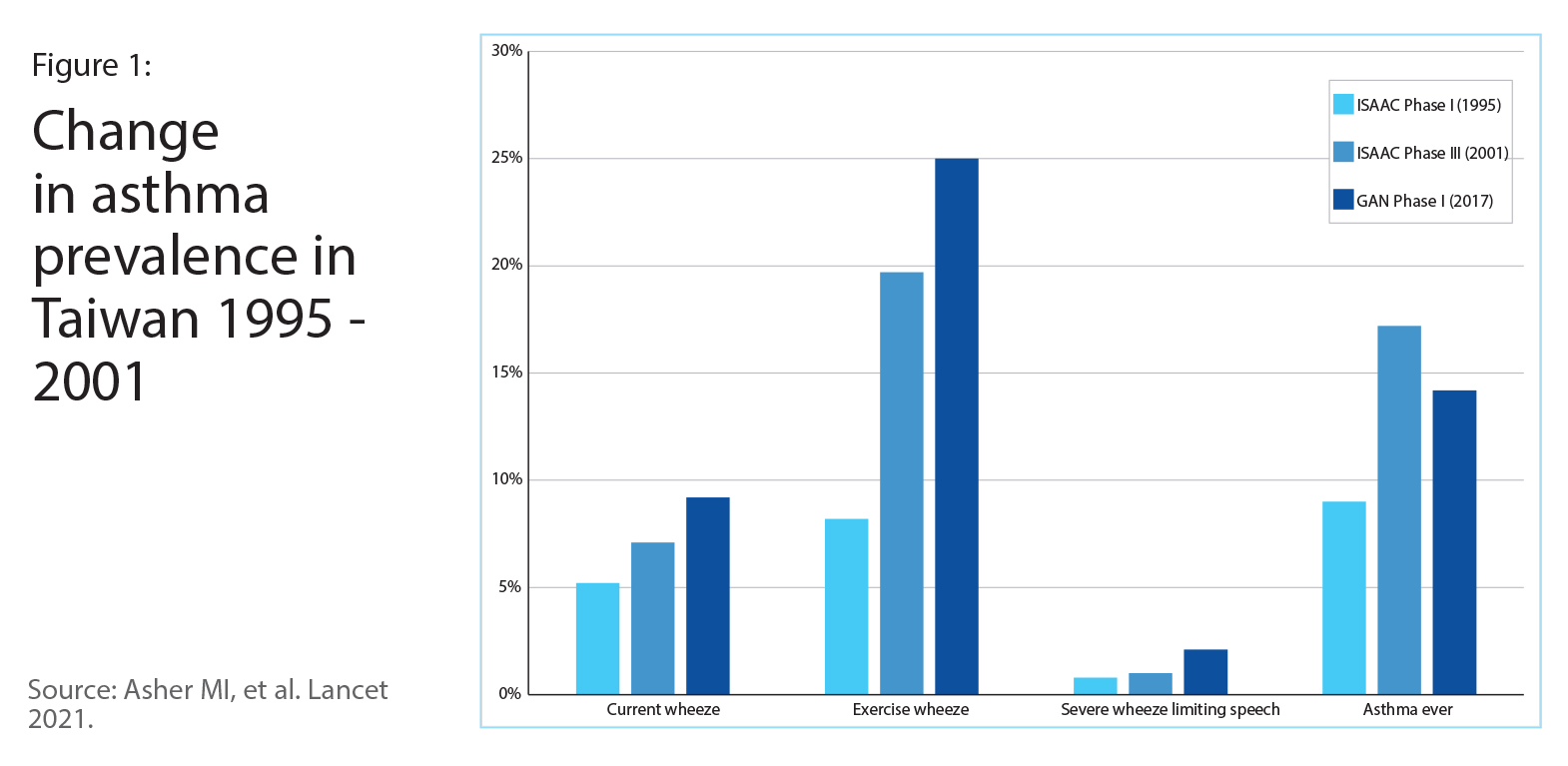
Group asthma education provided by Chang Gung Memorial Hospital
Taiwan
Asthma prevalence increases as the economy develops
Along with the rapid economic development in Taiwan, asthma prevalence is increasing in the past three decades. In the 1970s, only 1.3% of 7-15 year-old students had asthma. In 1994 the prevalence of current wheeze increased to 5.2% and to 7.1% in 2002. In 2017, the Global Asthma Network (GAN) Phase I survey found that the prevalence of current wheeze was 9.2%. The change in asthma prevalence is demonstrated in Figure 1.
Asthma is a great burden to patients, their families, and the whole society. The annual cost of each asthmatic patient was more than 7000 USD in Taiwan, equaling 215 million USD as a total expenditure per year. Unscheduled clinic or emergency department visits all result in school or work absenteeism, leading to more indirect costs.
Joint intervention to provide better asthma care
Because of the increasing prevalence of asthma, in 2001 Taiwan’s National Health Insurance launched an Asthma Quality Enhancement Project. Subsequently Emergency Department visit and hospital admission rates decreased gradually. Paediatric and adult medical societies were devoted to formulating guidelines and training physicians to provide better asthma care. Physicians and nurses went to every corner in Taiwan to educate patients and their families about asthma. All of the measures attempted to alleviate the burden of asthma in Taiwan. The photo below shows the group asthma education provided by Chang Gung Memorial Hospital.
In recent years new biologics for asthma are being rapidly developed. Taiwan’s National Health Insurance covers these biologics for severe asthmatic patients, providing better and affordable treatment options for them. The measurement of exhaled nitric oxide is also covered by Taiwan’s National Health Insurance for 6-12 year-old children. A new generation of inhalation medications and devices are available in Taiwan as well. General practitioners, asthma specialists, and certified asthma education nurses cooperate efficiently to provide holistic care for asthmatic patients in Taiwan.
Air pollution and secondhand smoking are associated with the increase of asthma in Taiwan. In 2009, the Taiwan government passed the Renewable Energy Development Act, aiming to reduce the utility of fossil fuel and increase the renewable share to 20% by 2025. Electric vehicles are promoted by giving tax exemptions and subsidies in Taiwan. Cigarette smoking is prohibited in the most public areas in Taiwan. High tobacco tax and education at schools and in the media intend to decrease the smoking population. All these measures are hopefully decelerating the increasing trend of asthma in Taiwan.
The prospect of asthma control in Taiwan
Through the joint effort to decelerate asthma prevalence and provide better asthma control, physicians, asthmatic patients, and their families look forward to a bright future in Taiwan. We hope “no one suffers from asthma” in Taiwan, the same as the vision of GAN.

